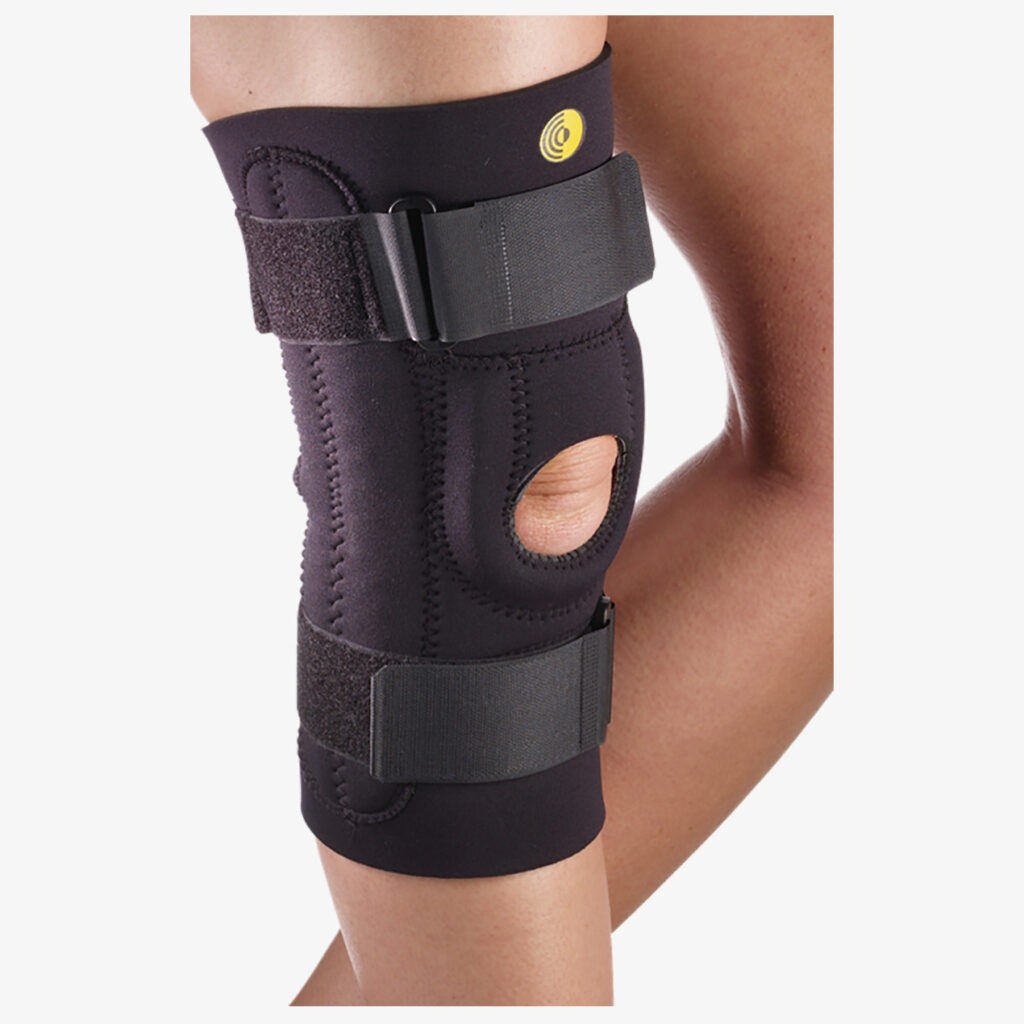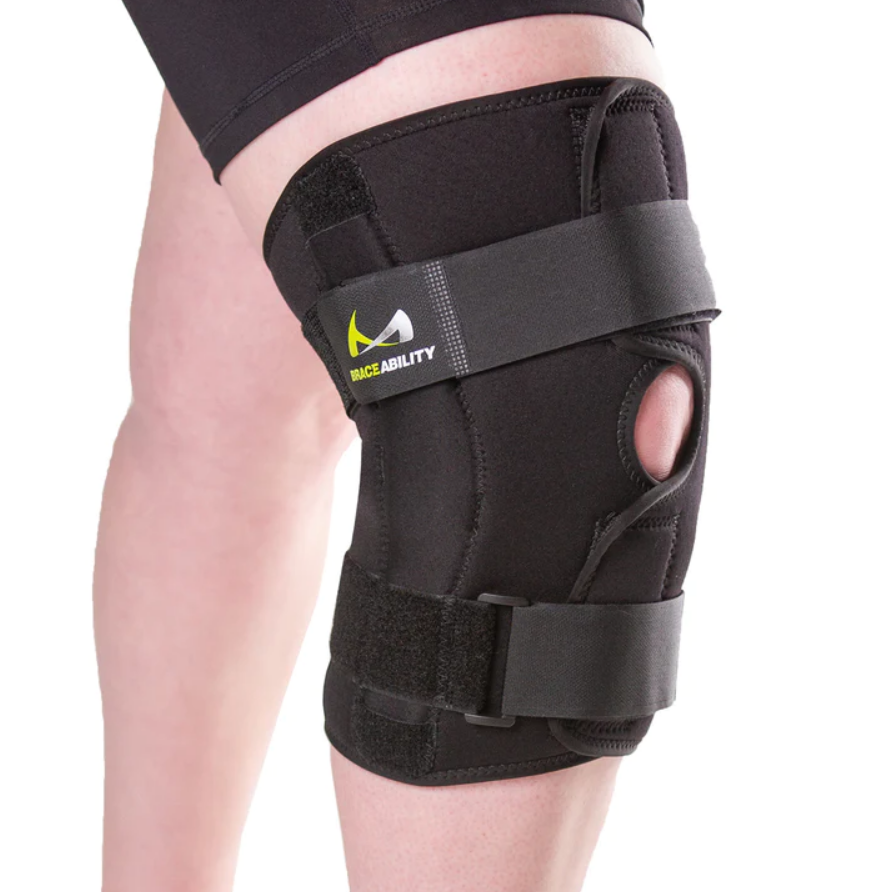In this article, you will learn about the benefits of knee braces and how they can help you live a pain-free life. We will discuss the different types of knee braces available and their specific functions. Additionally, you will discover the conditions and injuries that knee braces can effectively treat and prevent. By understanding the advantages of knee braces, you will be able to make an informed decision about whether they are the right solution for you.
What are Knee Braces?
Knee braces are medical devices designed to provide support and stability to the knee joint. Whether you have a knee injury, a chronic condition, or simply want to prevent future injuries, knee braces can be incredibly beneficial. They are made from a combination of soft and rigid materials, and they come in various sizes and designs to accommodate different needs.
Function of Knee Braces
The primary function of a knee brace is to provide stability and support to the knee joint, helping to alleviate pain and reduce the risk of further injury. By applying compression and pressure to specific areas of the knee, braces can help improve blood flow, reduce swelling, and promote healing.
Knee braces can also help to correct alignment issues, such as patellar misalignment or tracking problems. They can offer stability during physical activities, such as sports, by preventing excessive movement or hyperextension of the knee.
Types of Knee Braces
There are several different types of knee braces available on the market, each designed to address specific conditions or injuries. The most common types include:
-
Prophylactic Knee Braces: These braces are preventive in nature and are often used by athletes to reduce the risk of knee injuries during physical activities. They provide general support, stability, and protection to the knee joint.
-
Patellar Stabilizing Braces: These braces are designed to provide extra support to the patella, or kneecap. They are commonly used to treat conditions such as patellar tendonitis, patellar dislocation, or patellofemoral pain syndrome.
-
Functional Knee Braces: These braces are typically recommended after a knee injury, such as an anterior cruciate ligament (ACL) tear or a meniscus tear. They are designed to support and stabilize the knee during the healing process and rehabilitation.
Benefits of Using Knee Braces
Using a knee brace can provide several benefits, including:
-
Pain Relief: Knee braces can help alleviate pain by supporting the knee joint and reducing stress on the injured or affected area.
-
Injury Prevention: By providing stability and support, knee braces can help prevent or minimize the risk of injuries during physical activities, especially for individuals with weak or unstable knees.
-
Improved Function: Knee braces can improve the function of the knee joint, allowing individuals to engage in activities they may have previously avoided due to pain or instability.
-
Post-Surgery Rehabilitation: After knee surgery or other invasive procedures, knee braces can aid in the rehabilitation process by providing support and protecting the healing tissues.
-
Enhanced Performance: Athletes often rely on knee braces to enhance their performance by providing extra stability and support to their knees during intense physical activities.
When to Use Knee Braces?
Knowing when to use knee braces is crucial in order to maximize their benefits and prevent further damage to the knee joint. Whether you are dealing with a knee injury, a chronic condition, or simply want to protect your knees during sports or physical activities, knee braces can be a valuable tool.
Knee Injuries and Conditions
If you have experienced a knee injury, such as a ligament tear, a meniscus tear, or a sprain, wearing a knee brace can provide support and stability during the healing process. It can help reduce pain, prevent further damage, and promote a faster recovery.
Additionally, individuals with chronic knee conditions such as osteoarthritis, patellar tendonitis, or chondromalacia patella can benefit from the support and pain relief that knee braces provide. They can help alleviate discomfort during daily activities and enhance overall knee function.
Preventing Knee Injuries
If you are involved in sports or activities that put stress on the knees, using knee braces as a preventive measure can be highly beneficial. By providing extra support and stability, knee braces can reduce the risk of common knee injuries, such as ligament sprains or patellar dislocations.
Post-Surgery Rehabilitation
For individuals who have undergone knee surgery, wearing a knee brace as part of the rehabilitation process can aid in the healing and strengthening of the knee joint. It provides support and protection to the surgical site, allowing for a smoother recovery and a faster return to normal activities.
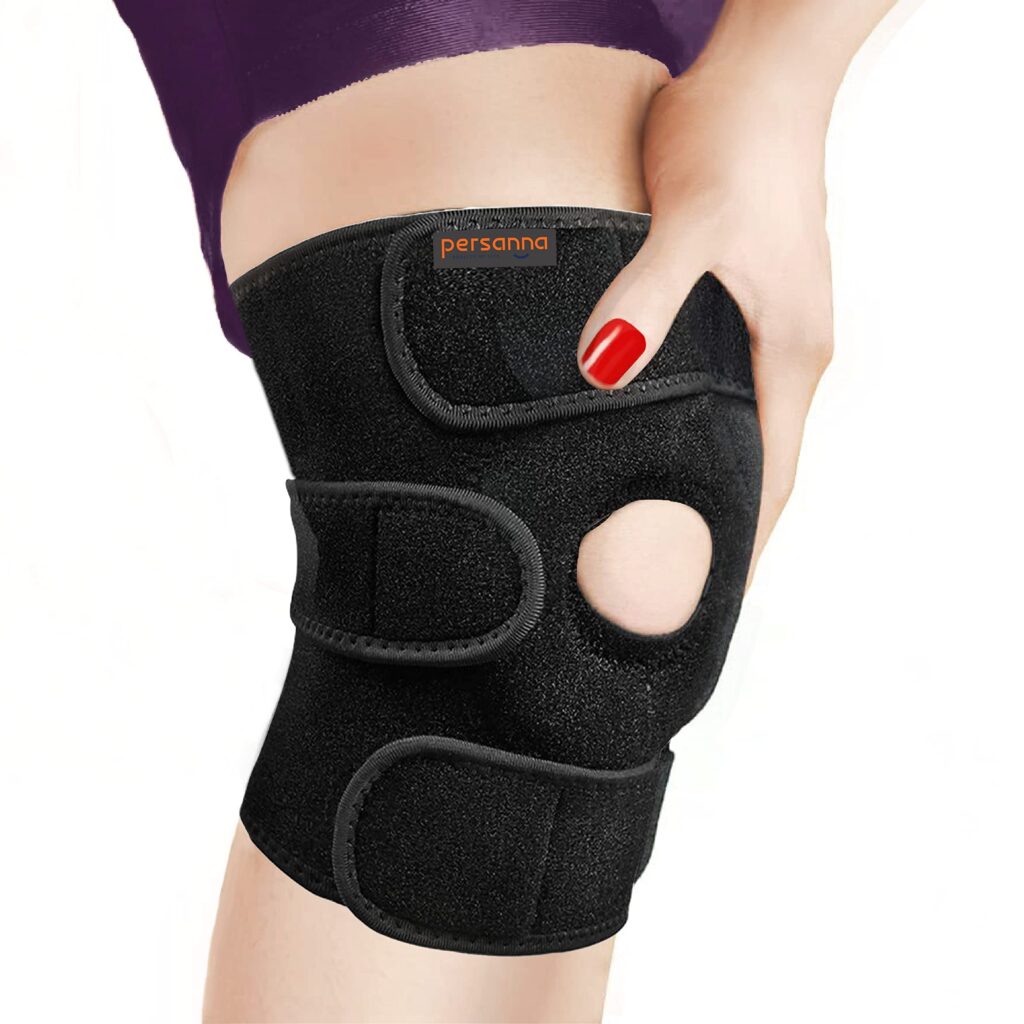
Choosing the Right Knee Brace
Choosing the right knee brace is essential to ensure proper support and functionality. There are several factors to consider when selecting a knee brace, including fit, consultation with a healthcare professional, and specific features.
Considerations for Proper Fit
The fit of a knee brace is crucial for its effectiveness. It should be snug, but not too tight, in order to provide optimal support and stability. It is essential to carefully measure the circumference of your knee and refer to the sizing charts provided by the manufacturer to choose the correct size.
Consulting with a Healthcare Professional
Before purchasing a knee brace, it is recommended to consult with a healthcare professional, such as a physical therapist or orthopedic specialist. They can assess your specific condition or injury and provide guidance on the most suitable type of knee brace for your needs.
Features to Look for in a Knee Brace
When choosing a knee brace, consider the specific features that will best meet your requirements. Some common features to look for include adjustable straps, removable hinges, breathable materials, and moisture-wicking properties. Additionally, make sure that the brace is easy to put on and take off for convenience and comfort.
Common Knee Bracing Techniques
Depending on your specific needs or condition, different knee bracing techniques may be used. Here are some common knee bracing techniques:
Patellar Stabilizing Braces
Patellar stabilizing braces are designed to provide additional support to the patella, or kneecap. They often consist of a horseshoe-shaped buttress that surrounds the patella and holds it in alignment within the patellar groove. These braces can help alleviate pain associated with conditions like patellar tendonitis, patellar dislocation, or patellofemoral pain syndrome.
Prophylactic Knee Braces
Prophylactic knee braces, also known as “pro braces,” are primarily used by athletes as a preventive measure against knee injuries. They provide general support and stability to the knee joint during high-impact sports or activities. Pro braces are commonly used in sports such as football, soccer, and basketball to reduce the risk of ligament sprains and other knee injuries.
Functional Knee Braces
Functional knee braces are often prescribed after a knee injury, such as an ACL tear or a meniscus tear, to provide stability and support during the healing process. These braces typically have metal or plastic hinges on the sides to limit excessive movement and protect the injured knee. They are designed to promote proper healing and prevent re-injury.
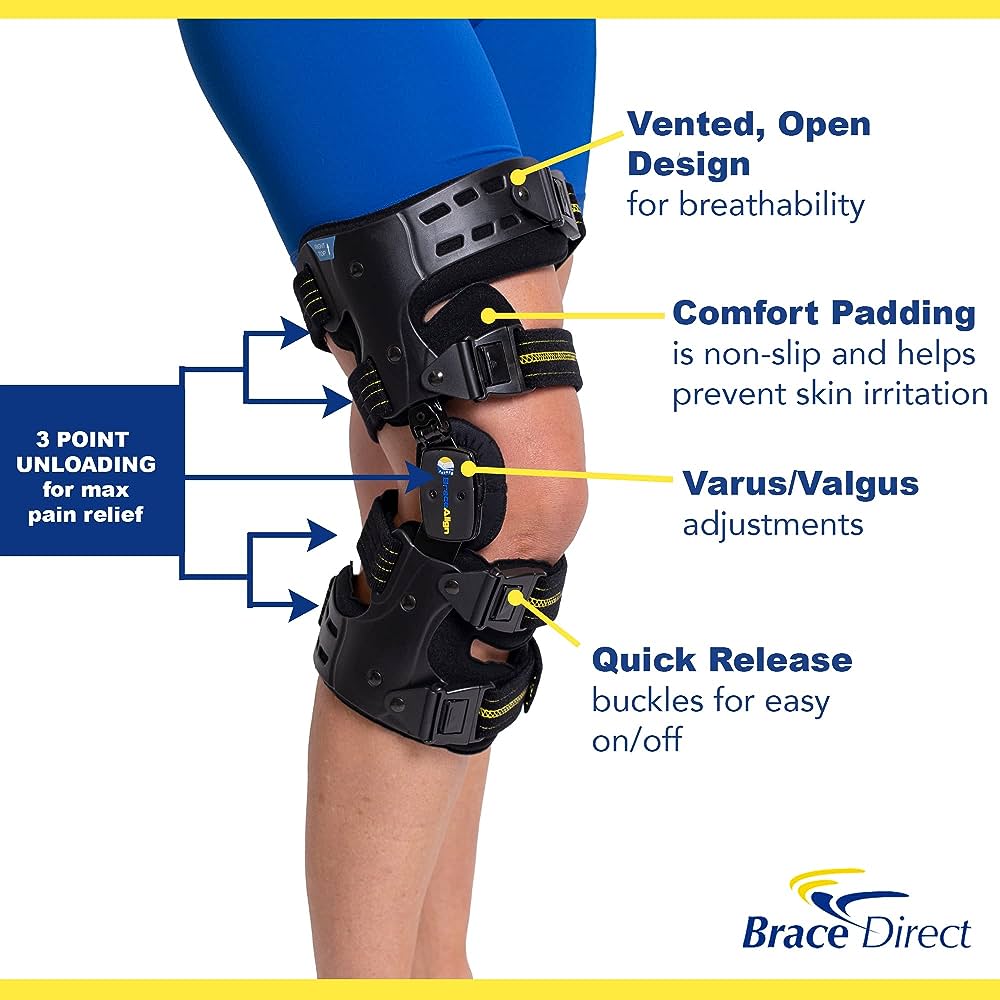
How to Wear a Knee Brace Correctly
Wearing a knee brace correctly is essential to ensure maximum support and effectiveness. Follow these steps to ensure proper positioning and secure fit:
Understanding Proper Positioning
First, place the knee brace over the lower part of your leg, with the hinges on the sides aligned with the middle of the knee joint. Make sure the brace covers the front of the knee, including the patella, and extends a few inches above and below the knee to provide adequate support.
Securing the Straps Correctly
Depending on the design of your knee brace, there may be straps or closures to secure the brace in place. Start by fastening the top and bottom straps, ensuring they are snug but not too tight. Next, adjust the middle straps, if applicable, to provide additional support and compression.
Adjusting the Brace for Optimal Support
Once the knee brace is securely fastened, check for proper alignment and adjust any straps or closures if needed. The brace should feel comfortable, providing adequate support without restricting movement or causing discomfort. If you experience any pain, numbness, or tingling sensations, adjust the brace or consult a healthcare professional for guidance.
Knee Braces During Sports and Activities
Knee braces can play a significant role in enhancing performance, reducing the risk of injuries, and maintaining freedom of movement during sports and various activities.
Enhancing Performance and Stability
Athletes often use knee braces to enhance their performance by providing extra stability to their knees. By reducing excessive movements or hyperextension, knee braces can improve agility, balance, and overall athletic performance.
Reducing the Risk of Injuries
Wearing knee braces during sports and physically demanding activities can significantly reduce the risk of knee injuries. The braces provide support and stability, preventing ligament tears, sprains, or dislocations. This is particularly important for individuals with weak or previously injured knees.
Maintaining Freedom of Movement
While providing support and stability, knee braces should also allow for a full range of motion and natural movement. Quality knee braces are designed to maintain freedom of movement, enabling athletes and individuals to perform their favorite activities without limitations.
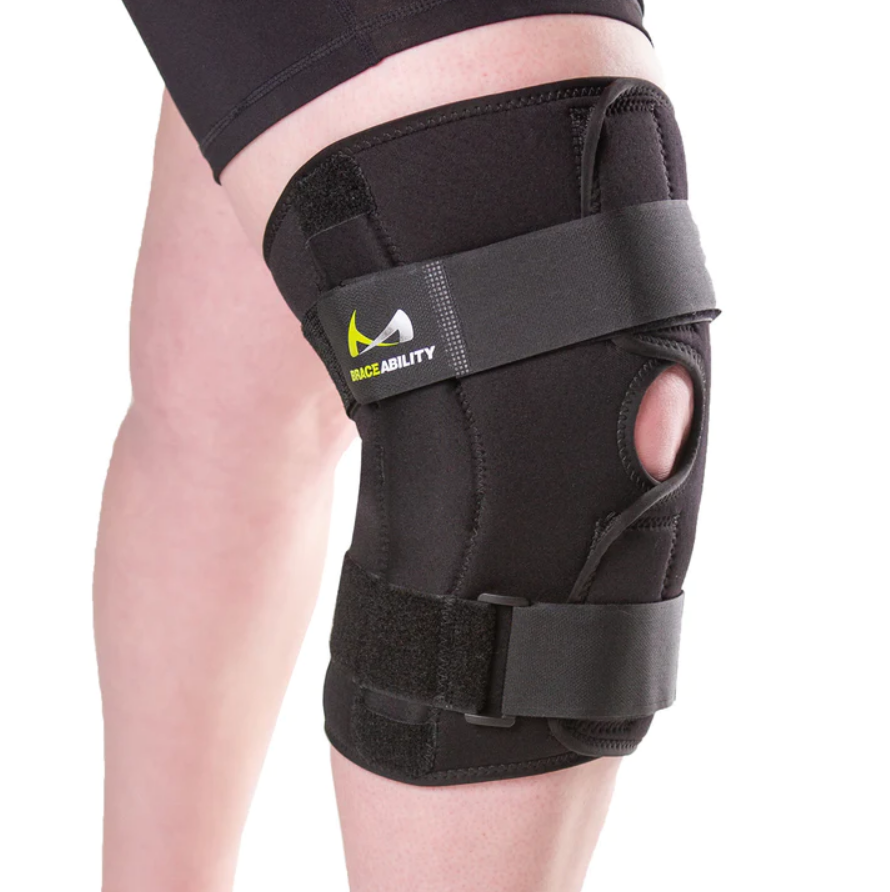
Caring for and Maintaining Knee Braces
Proper care and maintenance of knee braces are essential for their longevity and continued effectiveness.
Cleaning and Washing Instructions
Refer to the manufacturer’s instructions for specific cleaning and washing instructions. In general, most knee braces can be hand-washed using mild soap and water, or machine-washed on a gentle cycle using a laundry bag. Avoid using harsh chemicals or excessive heat when drying the brace.
Storage Guidelines
When not in use, store your knee brace in a clean, dry place, away from direct sunlight or extreme temperatures. Avoid folding or crumpling the brace, as it may damage the structural integrity and effectiveness of the product.
Inspecting for Wear and Tear
Regularly inspect your knee brace for any signs of wear and tear, such as frayed straps, loose stitching, or broken hinges. If you notice any damage, it is recommended to replace the brace to ensure optimal support and functionality.
Potential Side Effects and Precautions
While knee braces can provide numerous benefits, it is important to be aware of potential side effects and take necessary precautions.
Skin Irritation and Allergic Reactions
Some individuals may experience skin irritation or allergic reactions when wearing knee braces. To mitigate these risks, choose braces made from hypoallergenic materials and ensure proper hygiene by cleaning the brace regularly. If you experience persistent skin irritation or allergic reactions, discontinue use and consult a healthcare professional.
Numbness or Tingling Sensations
Improperly fitted knee braces or excessive compression may result in numbness or tingling sensations. If you experience these symptoms, adjust the brace to reduce pressure on specific areas or consult a healthcare professional for further guidance.
Precautions for Specific Medical Conditions
Certain medical conditions, such as blood circulation disorders or infections, may require special precautions when using knee braces. It is crucial to consult with a healthcare professional before using knee braces if you have any underlying medical conditions.

Knee Braces for Different Activities
Knee braces can be beneficial for individuals engaging in various activities, including running, weightlifting, and cycling.
Running and Jogging
Knee braces can provide support and stability to runners and joggers, reducing the impact on the knee joint and preventing injuries such as runner’s knee or patellar tendonitis. They can also aid in the recovery and rehabilitation of knee injuries, allowing runners to slowly and safely return to their regular training routine.
Weightlifting and Strength Training
During weightlifting and strength training exercises, knee braces can provide stability and support to the knee joint, reducing the risk of injuries. They can help distribute the load evenly across the knee, preventing excessive strain on the ligaments and tendons.
Cycling and Biking
Cyclists and bikers often use knee braces to prevent overuse injuries, such as iliotibial band syndrome or patellar tendonitis. By providing stability and support to the knee joint, knee braces can help reduce pain and discomfort during long rides or intense cycling sessions.
Conclusion
Knee braces are valuable tools in promoting knee health and ensuring a pain-free life. Whether you are dealing with a knee injury, a chronic condition, or want to prevent future injuries during sports or physical activities, knee braces can provide the necessary support, stability, and protection for your knee joint.
Remember to choose the right knee brace based on your specific needs and consult with a healthcare professional for proper guidance. By wearing a knee brace correctly, following proper care and maintenance, and being aware of potential side effects and precautions, you can maximize the benefits of using knee braces and maintain healthy knees for years to come.
